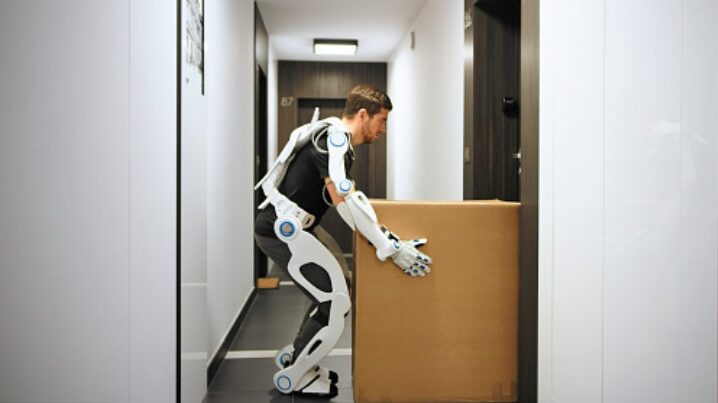We had a great time attending the 2021 National Ergo Conference! With exoskeleton (exo) technology being one of the hot topics at this year’s conference, we wanted to share some of the key takeaways from the sessions we attended.
Session: Asking the Right Questions About Exo Technology for Your Organization
Our Takeaway: Exoskeleton technology isn’t for every company. Ask the right questions before you decide to implement. Questions like:
- Have we explored ergonomics? Perhaps there is a countermeasure under the Hierarchy of Controls that might be more effective than an exoskeleton.
- Which jobs and/or which parts of the body need exos?
- It’s important to know where you need help—whether it’s above-shoulder work, bending and lifting, or gripping—and what level of torque offset is provided by the exo to know if it would be effective. The Lifting Fatigue Failure Tool (LiFFT) or the ACGIH Upper Limb Localized Fatigue TLV are examples of tools that can help answer these questions.
- Will an exo fit everyone and every job?
- When it comes to using exos, the right fit is key. Assistance, comfort, and freedom make up the pillars of correct exo fit and should be evaluated on a per job and per person basis.
- Is there evidence that exos work? Would your people be willing to use them?
- Implementation of a new technology is only as effective as the people using it. Before making the switch to exos, it’s important to ensure the exo has been independently validated and is good for use in the field, both short-term and long-term. Once you’re confident they’ll work, you can evaluate your workforce to address important questions like, “Do you actually see yourself using the exoskeleton long-term?”
- Are we ready for implementation?
- If you were able to confidently answer the questions above and know that your people are ready to take on a new technology, it’s time to implement. To start, spend time developing the right assets, like a communication plan and implementation playbook, to share key messages and outline the nuts and bolts of your implementation. This will help lay the foundation for your rollout. Then, provide resources like implementor guides and training plans to help share expectations and ensure the right people are involved and receiving the necessary training. Finally, create a troubleshooting plan if issues arise with the product, people, or the plan in general. When it comes to change management around new technology, there really isn’t such a thing as too much communication.
Session: Three Years & 3 Million Hours: How Deploying Safety Wearables Prevents Musculoskeletal Disorders at Walmart
Our Takeaway: Wearables may work as a screening tool to help identify high musculoskeletal disorder (MSD) risk jobs and tasks.
Walmart conducted a 3-year pilot using FUSE sensors—wearable sensors that provide haptic (transmission of information through touch) feedback when operators enter a compromised back position. During this pilot, they saw a 31-37% injury reduction on the experimental group wearing the sensors versus the control group that didn’t wear them. They noted that the sensors helped identify some jobs or tasks that were high MSD risk, and they were able to implement engineering and administrative controls to intervene. While this made it difficult to determine whether the injury reduction was behavioral or due to the controls interventions, one takeaway was that wearables may work as a screening tool to help identify high MSD risk jobs and tasks, so employers are able to implement necessary controls to correct the problem(s).
Session: The Exoskeleton Evolution: Lessons from Established and New Adopters
Our Takeaway: Learn from others to improve design and adoption of exoskeleton technology.
Those already using exoskeleton technology have learned valuable lessons when it comes to reducing barriers and hesitancy for adopting exoskeletons. When it comes to designing and selling devices, improvements like “smart-powered” systems to eliminate negative resistance, softer suits, easier device management (think SaaS models), and more access to free trials will go a long way in convincing an organization to adopt this technology.
Once implemented, assigning exos to the appropriate tasks and providing the necessary levels of training will help make the implementation successful. For example, exos help reduce effort but they do not reduce risk, nor are they ideal for tasks with higher frequency or twisting motions—so opt for countermeasures that are higher on the Hierarchy of Controls when possible and save the use of exoskeletons to focus on specific target tasks.
————–
Want to talk more ergo? Whether you need help with industrial, office, or home office ergonomics VelocityEHS has the experts and solutions you can trust. Visit VelocityEHS to learn more.
